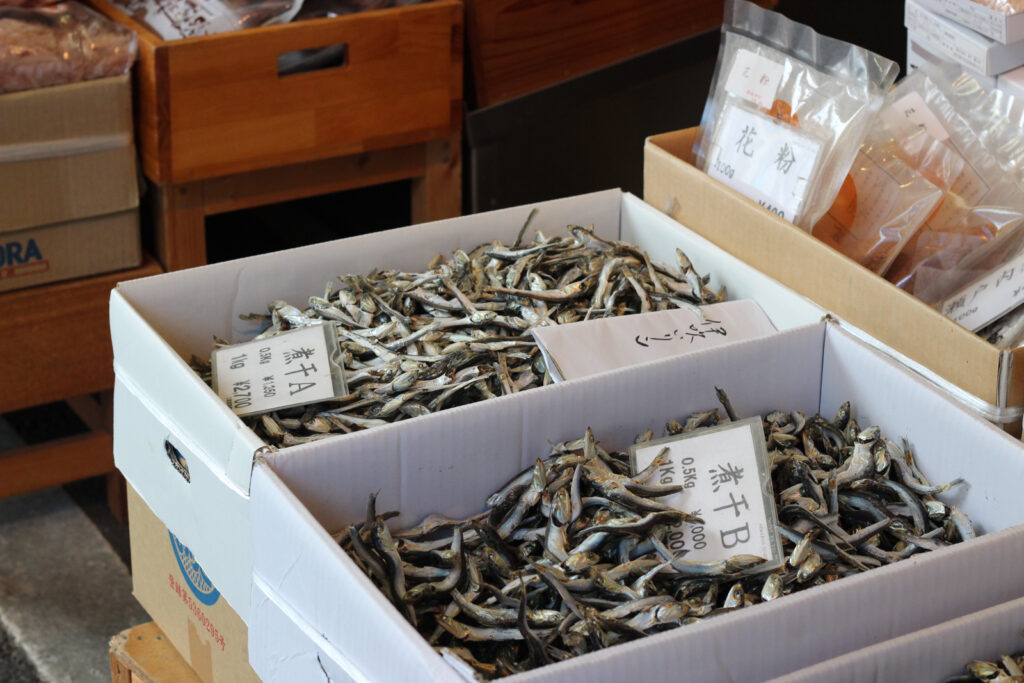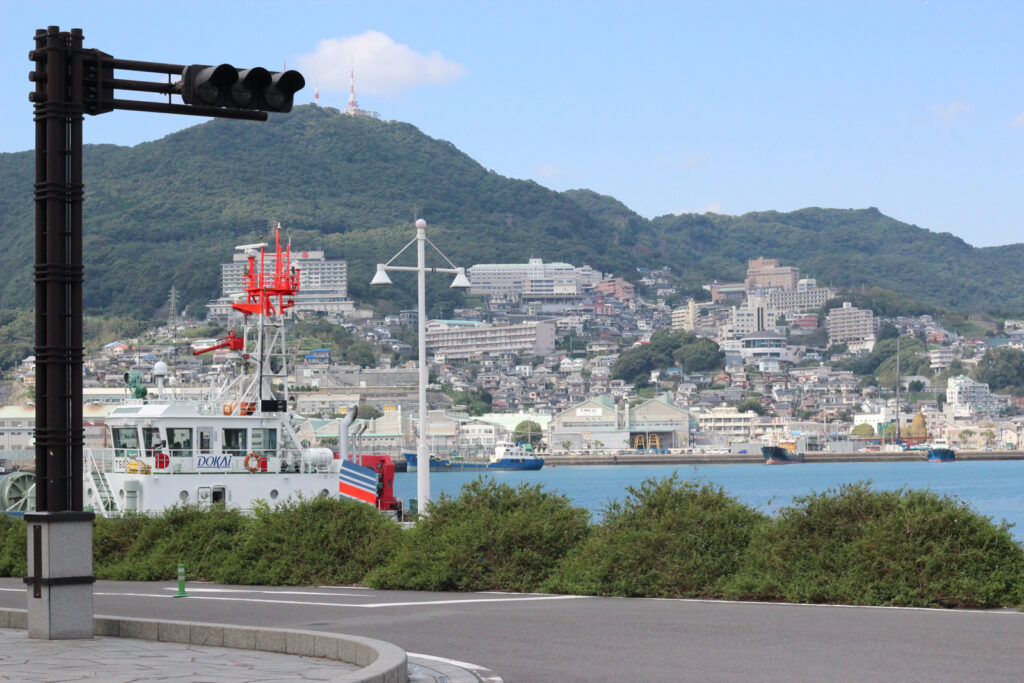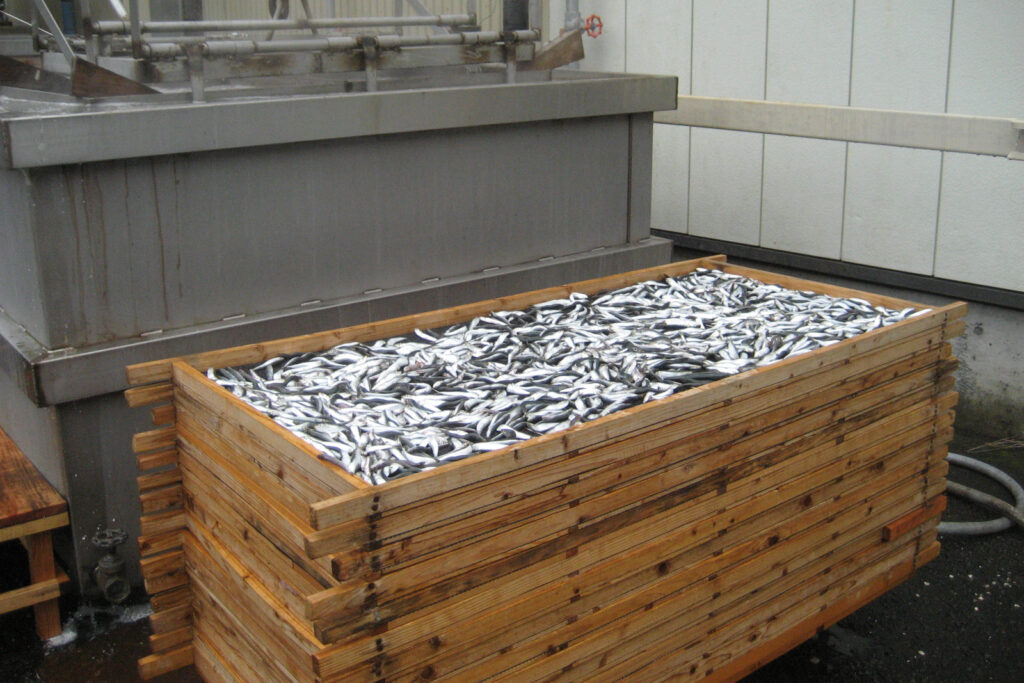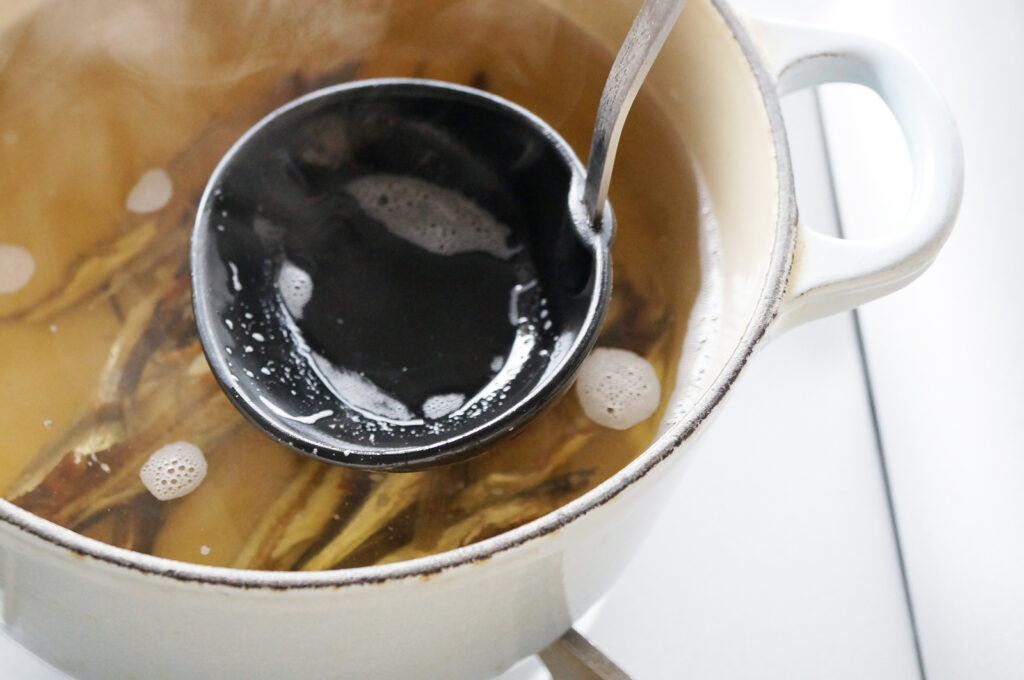Getting fresh kombu or katsuo from further north was expensive and took time, so the Kyushu people had to look elsewhere to find a suitable substitute for their dashi broth. It so happens that the area, specifically Nagasaki, has an abundance of baby sardines and anchovies and so the local people decided to try them out for dashi–and succeeded. Today, Nagasaki prefecture claims the title of both having the largest catch of these small fish and of being the largest producer of iriko in Japan, accounting for around 25-35% of total domestic production.

Iriko, also called niboshi in Eastern Japan, is the common name for the dried version of these small fish. For dashi it is typically either the smaller, darker anchovy or the slightly bigger, pinky sardine that are used.
The processing of the fish to make iriko is not complicated, but is labor intensive. First the fish are washed by placing them onto bamboo frames with wire meshing, and submerging them in water. Then the same frames are taken and stacked a few at a time and lowered into boiling water for 3-5 minutes. After boiling, the fish are carefully laid so as to not overlap, and the frames are stacked in trolleys and placed overnight in a temperature controlled room. The next day they are ready to consume. Getting the temperature and timing of the various processes are also critical, and is dependent on weather and sea conditions each day. Only a master can perfect this.

A couple of points set Nagasaki iriko apart. The umami component of dried sardines is the same inosinic acid as katsuobushi, and is created by an enzymatic action when the fish are caught. To stop the decomposition of the acid, the fish must be boiled and dried as soon as possible. Nagasaki’s port is right next to the processing factories and so the iriko can retain a lot of this flavorsome acid. Another factor that makes these beauties more desirable is that they are boiled in seawater. This both adds to the mineral content and means they remain fresher for longer and have a deeper, more rounded flavor.

To try, simply pop a few in a cup of water and let it sit overnight for a delicate dashi broth, or perhaps you have a bit more time and want to create a sweeter, more umami-rich broth by adding some kombu in there too. Either way, you can use this as the foundation for miso soup, udon dishes, or any simmered vegetables. If you can’t wait, they are a great snack with beer too!












